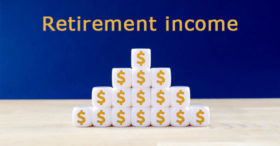Employers offer 401(k) plans for many reasons, including to attract and retain talent. These plans help an employee accumulate a retirement nest egg on a tax-advantaged basis. If you’re thinking about participating in a plan at work, here are some of the features.
Under a 401(k) plan, you have the option of setting aside a certain amount of your wages in a qualified retirement plan. By electing to set cash aside in a 401(k) plan, you’ll reduce your gross income, and defer tax on the amount until the cash (adjusted by earnings) is distributed to you. It will either be distributed from the plan or from an IRA or other plan that you roll your proceeds into after leaving your job.
Tax advantages
Your wages or other compensation will be reduced by the amount of pre-tax contributions that you make — saving you current income taxes. But the amounts will still be subject to Social Security and Medicare taxes. If your employer’s plan allows, you may instead make all, or some, contributions on an after-tax basis (these are Roth 401(k) contributions). With Roth 401(k) contributions, the amounts will be subject to current income taxation, but if you leave these funds in the plan for a required time, distributions (including earnings) will be tax-free.
Your elective contributions — either pre-tax or after-tax — are subject to annual IRS limits. For 2021, the maximum amount permitted is $19,500. When you reach age 50, if your employer’s plan allows, you can make additional “catch-up” contributions. For 2021, that additional amount is $6,500. So if you’re 50 or older, the total that you can contribute to all 401(k) plans in 2021 is $26,000. Total employer contributions, including your elective deferrals (but not catch-up contributions), can’t exceed 100% of compensation or, for 2021, $58,000, whichever is less.
Typically, you’ll be permitted to invest the amount of your contributions (and any employer matching or other contributions) among available investment options that your employer has selected. Periodically review your plan investment performance to determine that each investment remains appropriate for your retirement planning goals and your risk specifications.
Getting money out
Another important aspect of these plans is the limitation on distributions while you’re working. First, amounts in the plan attributable to elective contributions aren’t available to you before one of the following events: retirement (or other separation from service), disability, reaching age 59½, hardship, or plan termination. And eligibility rules for a hardship withdrawal are very stringent. A hardship distribution must be necessary to satisfy an immediate and heavy financial need.
As an alternative to taking a hardship or other plan withdrawal while employed, your employer’s 401(k) plan may allow you to receive a plan loan, which you pay back to your account, with interest. Any distribution that you do take can be rolled into another employer’s plan (if that plan permits) or to an IRA. This allows you to continue deferral of tax on the amount rolled over. Taxable distributions are generally subject to 20% federal tax withholding, if not rolled over.
Employers may opt to match contributions up to a certain amount. If your employer matches contributions, you should make sure to contribute enough to receive the full match. Otherwise, you’ll miss out on free money!
These are just the basics of 401(k) plans for employees. For more information, contact your employer. Of course, we can answer any tax questions you may have.
© 2021 Covenant CPA






